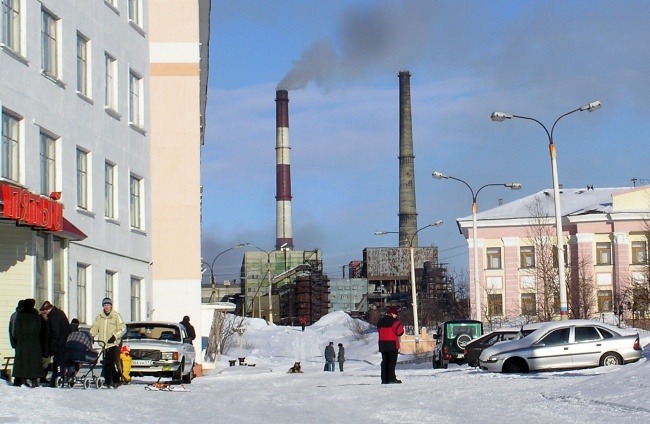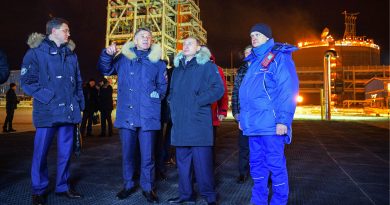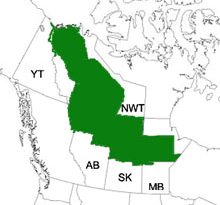Norway is polluting Murmansk says Russian official

More than half of the pollution in Murmansk Oblast comes from Europe, and especially Norway, a representative from the regional ministry of ecology claims.
“Nearly 52 percent of all substances that are polluting the environment in Murmansk Oblast come from cross boundary emissions from Europe,” Deputy Deputy Minister of Natural Resources and Ecology in Murmansk Oblast Vladimir Khrutsky said at a round table discussion on ecology in Murmansk on Thursday.
According to Khrutsky, his department has no claims against industrial companies on the Kola peninsula, on the contrary, he praised them for their long-time and successful environmental work:
“Russian companies are often exposed to heavy criticism from foreign environmental organizations, despite the fact that the volumes of our emissions are constantly going down and disturbed eco systems are being restored,” he said according to Rossiyskaya Gazeta.
Norwegian scientists skeptical
The claims that much of the pollution in Murmansk Oblast comes from the West, was first put forward by the Russian ecological organization Green Patrol in 2013. After a short survey in the borderland, the organization concluded that 45 percent of the volume of pollution in the Murmansk region is due to cross-boundary emissions. The organization said that Norway pollutes Russia with 2.4 times more nitrogen compounds than the other way around.
The results of the report were spread widely in Russian media after the presentation, but were met with immediate skepticism from Norwegian scientists who claimed the report lacked any type of scientific documentation.
Also Russian scientists dispute the results of the survey. According to Dmitry Makarov from the Institute of Industrial Ecology at the Kola Science Center, both nitrogen oxide and sulphur dioxide ends up in Russia because of cross-boundary emissions, but that there are no documentation of the volumes, Rossiyskaya Gazeta writes.
Bellona made to answer for Norwegian pollution
Bellona Murmansk, which in March 2015 was placed on the “Foreign Agent” list, was the only environmental NGO invited to the round table, and had to answer for not only environmental organizations’ dissatisfaction with the slow tempo of reduction of emissions, but also for Norway’s environmental problems.
When pointing out that the numbers on cross-boundary pollution that Khrutsky was referring to, are seen as unreliable by both foreign and Russian scientists, Bellona’s representative was called a non-constructive critic.
Bellona’s representative Anna Kireeva was also asked about Norwegian environmental issues, like the controversial dumping of waste from the mining industry into fjords. “Yet none of the organizers knew the name of the company they were discussing,” Bellona writes:
“I have never heard of a situation in which Murmansk’s Environmental Ministry, having successfully dealt with all the Region’s environmental issues, and as such are fretting about the condition of Norwegian fjords, have taken it upon themselves to make similar inquires of their own. For instance, the authorities and simple folk of Northern Norway are extremely concerned about sulfur dioxide emissions along the Norwegian-Russian border – and it seems a times that only the Norwegians are concerned about this – are trying to address the issue as they can,” Kireeva says.
For the past 20 years, Kola Mining Company’s nickel plant in the town of Nikel on the border to Norway has repeatedly been the key subject of intensive, albeit resultless, negotiations between environmental authorities from the neighboring countries. The plant, a unit of the powerful Norilsk Nickel company, has annual sulphure dioxide emissions of about 90,000 tons, about five times the total Norwegian emissions.
Emsissions from the plant often exeed maximum allowed levels of sulphur dioxide. On April 5 this year, the concentration of SO2 exeeded maximum allowed level 12,6 times, according to official measurements from Roshydromet.
Related stories from around the North:
Canada: “Dumpcano” costs mounting in Canada’s eastern Arctic, Radio Canada International
Finland: Police to probe Forssa waste disposal company, Yle News
Greenland: Study finds increase in litter on Arctic seafloor, Blog by Mia Bennett
Russia: Submariners feed polar bears with garbage, Barents Observer
Sweden: Sweden imports more and more waste, Radio Sweden
United States: Cleanup completed on 6 Arctic legacy wells in Alaska, Alaska Dispatch



